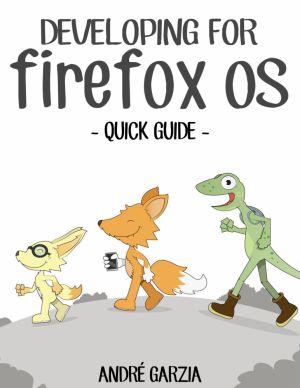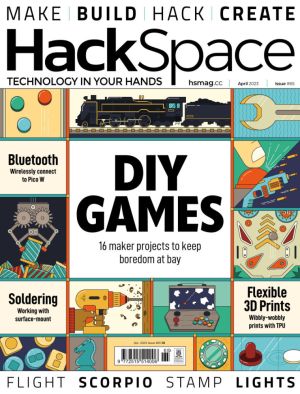
The OS kernel and this book were produced as part of an advanced individual course at the Royal Institute of Technology, Stockholm. The authors had previously taken courses in OS theory, but had only minor practical experience with OS kernel development. In order to get more insight and a deeper understanding of how the theory from the previous OS ...

Microsoft's HoloLens applications exist in the ever-expanding realm of mixed reality. In HoloLens Succinctly, author Lars Klint guides readers into the various segments of this augmented world, outlining the architecture of HoloLens apps, exploring code and design issues, and offering step-by-step instruction on inputting data so that users ca...

Learn how easy and quick it is to develop applications for Firefox OS, the new mobile operating system by Mozilla. Empowered by this books practical approach you will learn thru examples how to develop apps from the beginning all the way to the distribution in the Firefox Markeplace....

Cloud applications have a unique set of characteristics. They run on commodity hardware, provide services to untrusted users, and deal with unpredictable workloads. These factors impose a range of problems that you, as a designer or developer, need to resolve. Your applications must be resilient so that they can recover from failures, secure to pro...

The React Native Notes for Professionals book is compiled from Stack Overflow Documentation, the content is written by the beautiful people at Stack Overflow....

Get a head start evaluating Windows 10-with technical insights from award-winning journalist and Windows expert Ed Bott. This guide introduces new features and capabilities, providing a practical, high-level overview for IT professionals ready to begin deployment planning now.
The goal of this book is to help you sort out what's new in Wind...

This open book summarizes the research done and results obtained in the second funding phase of the Priority Program 1648 "Software for Exascale Computing" (SPPEXA) of the German Research Foundation (DFG) presented at the SPPEXA Symposium in Dresden during October 21-23, 2019.
In that respect, it both represents a continuation of Vol. 1...

The emergence of the Internet of Things (IoT), combined with greater heterogeneity not only online in cloud computing architectures but across the cloud-to-edge continuum, is introducing new challenges for managing applications and infrastructure across this continuum. The scale and complexity is simply so complex that it is no longer realistic for...

This is a simple open book to learn Python programming language, it is for the programmers who are new to Python.
Python is an interpreted, high-level and general-purpose programming language. Python consistently ranks as one of the most popular programming languages. Large organizations that use Python include Wikipedia, Google, Yahoo, CERN, NA...

This book looks at some of the central issues in the philosophy of computer science. It is not designed to answer all (or even any) of the philosophical questions that can be raised about the nature of computing, computers, and computer science. Rather, it is designed to "bring you up to speed" on a conversation about these issues - to gi...

Raspberry Pi Pico is a new low-cost, high-performance microcontroller board with flexible digital interfaces. Microcontrollers are computers stripped back to their bare essentials. You don't use monitors or keyboards, but program them to take their input from, and send their output to the input/output pins. Using these programmable connections...

You can cache static assets - more than half the payload needed to respond to many web requests - and even application‑generated web pages (whether partial or complete). And you can use cache clusters and microcaching to increase the caching capability of your web applications while simplifying implementation and reducing operational complexity.
...

This issue we're paying homage to some of our favourite projects built on the Raspberry Pi. We're living in a golden age for experimentation, accessible making and digital discovery - and a large part of that is thanks to this teeny tiny computer. Just add imagination!
- How one maker achieved perfection (yes, really!) by embracing fai...

The home computer boom of the 1980s brought with it now iconic machines such as the ZX Spectrum, BBC Micro, and Commodore 64. Those machines would inspire a generation. Written by Tim Danton.
The Computers That Made Britain (300 pages, hardback) tells the story of 19 of those computers - and what happened behind the scenes. With dozens of new in...

Whether you want to build robots, smart devices, or any other electronically controlled projects, this is the book you need. We take you through how to program and connect an Arduino microcontroller board, then explore some great projects to make with it.
- Build a four-legged walking robot;
- Create a Tetris-inspired clock;
- Grow your own ve...

Open Softwear is a book about fashion and technology. More precisely it is a book about Arduino boards, conductive fabric, resistive thread, soft buttons, LEDs, and some other things.
Authors got the chance to come together to write down their conclusions in the form of an illustrated book aiming at students and professionals trying to enter the...

Human beings come in all shapes and sizes, all abilities and disabilities. So why should we have to fit in with technology, when technology can so easily be changed to suit us? That's the key question that unites the projects in this issue. From joystick adaptations to prosthetic limbs, we take a look at the ways that open source hardware is m...

The Raspberry Pi Pico: it costs pennies, it's simple to program with, and it's really good at getting data in and out. In short, it's the ideal board for home projects. We've hunted high and low for the best, most innovative, most creative projects around to show off what the Pico can do. What will you build with yours?
- Dis...

Things fall apart, the centre cannot hold. That's why repair skills are so important! This month we're talking upcycling - the art of making beautiful new projects out of old junk.
Plus: what happens when your just-for-kicks project turns out to be something that loads of people want? We talk to Timon Skerutsch, creator of the Piunora,...

Each chapter comprises a separate study on some optimization problem giving both an introductory look into the theory the problem comes from and some new developments invented by author(s). Usually some elementary knowledge is assumed, yet all the required facts are quoted mostly in examples, remarks or theorems....

What could be more satisfying than building a whole computer, from scratch? You might think it's impossible these days, but we've found a band of makers who are re-creating the clicky switches and flashing LEDs of a bygone age. Have a go yourself!
- Design, sustainability and ethics with Jude Pullen;
- Add much-needed safety features ...

Field programmable gate arrays (FPGAs) are integrated circuits that enable designers to program customized digital logic in the field. FPGAs have been around since the 1980s and were originally conceived to give all design teams the ability to create custom logic. In the early days, using an FPGA in your design meant you had to do a lot of programm...

In Issue 225 we show you how to build a stunning water-cooled PC with hard tubing, taking you through the whole process from start to finish. Not only do we show you what gear to buy, but we also show you how to measure it up, cut and bend your tubing and fit it all together.
You just need to add your own choice of Intel 12th-gen CPU, GPU, memor...

Discover how to set up Raspberry Pi to play classic games in the brand new version of our retro gaming guide. In this 164-page book, you'll learn how to build a portable games machine, assemble a full-sized arcade cabinet, and emulate classic computers and consoles. Our step-by-step guides make each build easy! Plus you'll even learn to p...

From component choice, to packaging, to marketing, to the million other things that you need to do when you scale up production, we'll help you turn your project into a product - and along the way it'll help you be a better maker.
- Build a rocket-powered wing-wing glider out of balsa wood and 3D printed parts (it's like the space...

An introduction to the engineering principles of embedded systems, with a focus on modeling, design, and analysis of cyber-physical systems.
The most visible use of computers and software is processing information for human consumption. The vast majority of computers in use, however, are much less visible. They run the engine, brakes, seatbelts,...

It's not yet Christmas, but we come bearing glad tidings: the supply of Raspberry Pis available to hobbyists is starting to come back to normal. To celebrate, we're exploring 20 of the best hardware projects you can build with a Raspberry Pi - whether that's large or small, simple or complex, useful or not-so-useful.
- Keep your p...

With enough inspiration, the world is your playground - that's why this issue we're bringing you 16 of the best DIY toys and games to keep boredom at bay.
- Get started with surface mount soldering
- Make Islamic-inspired geometric LED patterns
- Building an aeroplane powered by the super duper supercapacitor
- Drool over the finest...
